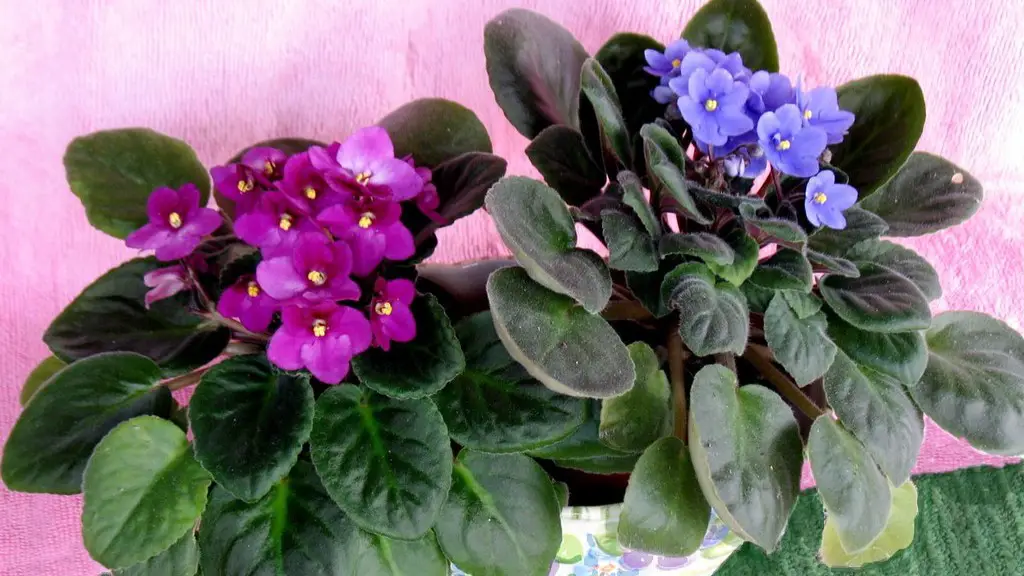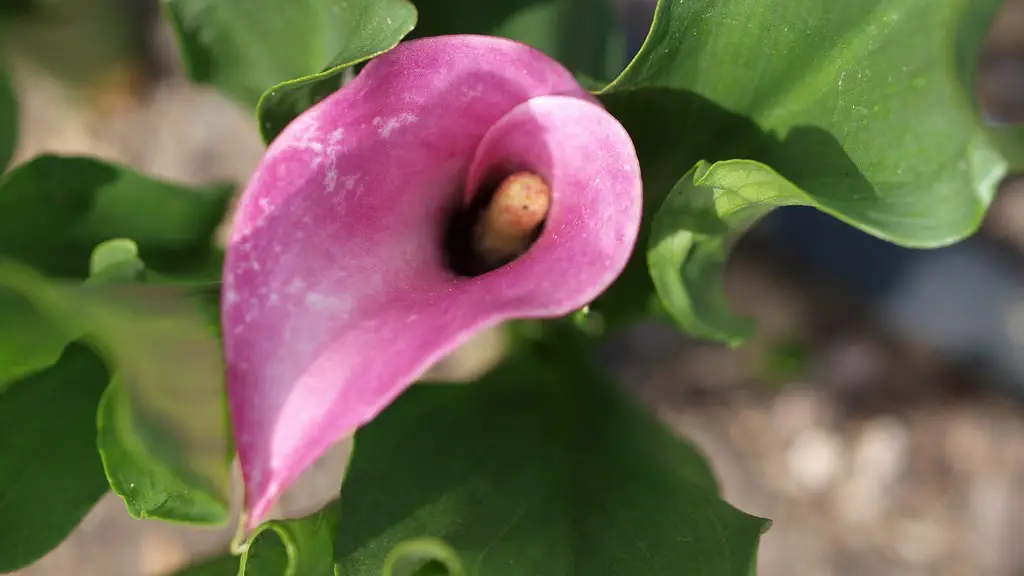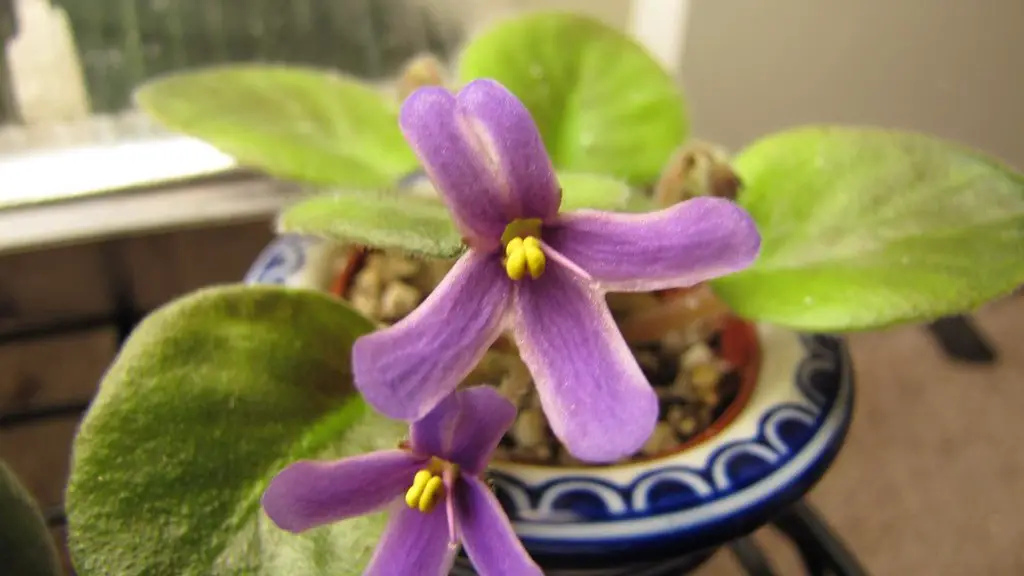One of the best ways to enjoy your African violets is to have them blooming. Here are a few tips on how to make your African violets bloom:
1. Water your African violets very early in the morning or late in the evening. Doing this avoids having the leaves and flowers exposed to the hot sun which can cause them to wilt.
2. African violets need to be kept moist but not drenched. The best way to water them is to use lukewarm water and to avoid getting water on the leaves.
3. Place your African violets in an area with bright indirect sunlight. They will do best in an east or west-facing window.
4. Be sure to fertilize your African violets regularly. Use a fertilizer that is high in phosphorus which will promote blooming.
5. Deadhead African violets regularly to encourage new growth and more blooms.
To make your African violets bloom, you need to make sure they are getting the right amount of light and water. African violets need about 14 hours of light each day, and they like to be kept moist but not wet. Once your African violets start to bloom, you can deadhead the flowers to encourage more blooming.
How long does it take for an African violet to bloom?
African violets are one of the most popular houseplants because they are easy to grow and they bloom nearly continuously. With the right growing conditions, they will produce flowers that last several weeks. If you disbud the old flowers, new flowers should bloom within 6 to 8 weeks. Some growers say their plants are in bloom up to 10 months a year.
Epsom salts are a great way to provide plants with essential magnesium and sulfur. Two minerals that are needed to produce beautiful blooms and healthy foliage. Mix one and a half teaspoons of Epsom salts in a quart of tepid water and swirl to dissolve. Water your African violets (below the leaves) with this solution once a month.
Where is the best place to put an African violet
If you want your plants to have the best color and blooms, grow them in bright, indirect light. A plant stand three feet away from a west- or south-facing window is an ideal location. Plants will still grow when situated right beside north- or east-facing windows, but leaves will be thin and spindly, and plants less likely to bloom.
If you’re only watering your African violets once a week, it’s important to allow the plant to completely dry out between waterings. One way to make sure your violets are never over watered is by setting up a wicking system. This will ensure that your plants always have the perfect amount of moisture, and you’ll never have to worry about them being too wet or too dry.
What causes African violets not to bloom?
If you want your African violets to bloom well, they need to be in a bright spot with indirect sun. Too little sunlight will cause them to stretch for the light and produce few or no flowers. Too much sun can burn the leaves. An east-facing window is ideal, especially with a sheer curtain to block the sun’s harshest rays.
Wild violets are beautiful flowers that can add a splash of color to any garden or landscape. However, they can also be very aggressive and difficult to control. If you are considering adding wild violets to your garden, be sure to do your research and be prepared for the challenges that come with them.
Are coffee grounds good for African violets?
Many people believe that coffee grounds are good for African violets, as they are slightly acidic and contain nitrogen. This combination can help promote healthy growth in plants. While it is not necessary to use coffee grounds every time you water your African violet, occasionally sprinkling them on top of the potting soil can be beneficial for the plant.
African violets are beautiful, delicate flowers that are native to Africa. They are popular houseplants and are known for their ability to thrive in low-light situations. Many growers have the best success fertilizing African violets once a week with a mild fertilizer designed for the plant. A balanced formula such as a 20-20-20 or one that has slightly more phosphorus, like a 15-20-15, will do well in most growing situations.
Is baking soda good for African violets
If powdery mildew on African violets is not improving, try spraying the plants lightly with a mixture of 1 teaspoon (5 ml) of baking soda in 1 quart (1 L) of water. You can also spray the air around the plant with Lysol or another household disinfectant, but be careful not to get too much spray on the leaves.
A lot of people don’t realize that brushing the leaves of African violets can actually be harmful to the plant. Repeated brushing can decrease the quality and size of the plant over time, so it’s best to just leave them be.
Do African violets like to be misted?
It is important to not mist the foliage of African violets as this may cause permanent leaf spotting. Use water that is room temperature to avoid crown rot.
Many growers of African Violets recommend repotting with fresh potting soil, twice a year or more. At the very least, an African Violet should be repotted whenever the plant becomes rootbound, ie, the Violet has outgrown its current pot to the extent that its roots are growing out and around the rootball.
Can I water African violets with tap water
It’s important to be aware of the quality of your tap water when growing African violets. Chlorine levels can fluctuate depending on the season, and in some areas tap water may have high levels of chlorine, chloramines, or dissolved solids. These things may adversely affect your African violets, so it’s best to use filtered or distilled water if possible.
When it comes to watering your plants, it is important to keep the soil moist to dry. Allow the soil around the roots to dry out before watering to encourage blooming. Water from the bottom with room temperature water by placing the plastic grower’s pot in water, and allowing the plant to absorb the water (not more than 30 minutes).
What do Overwatered African violets look like?
If your African Violet plant has been over-watered, the soil will retain too much water. This retention of water will cause the leaves and /or leaf stems to turn soft, limp or mushy.
African violets need a light, porous, aerated and well-drained potting mix to keep the roots moist, but not soggy. They should be positioned indoors in bright light but avoiding direct sun, away from drafts and air-conditioning. They will flower all year round, but mainly in spring and autumn.
Conclusion
African violets typically bloom in the spring, but they can also be induced to bloom at other times of the year. To make your African violets bloom, you will need to give them some extra care and attention. Start by making sure they are getting enough light. African violets need at least 12 hours of light per day, so if they are not getting enough light from the sun, you may need to supplement with grow lights. African violets also need to be kept moist, but not too wet. The soil should be allowed to dry out a bit between watering. Over-watering can lead to root rot, which will prevent your African violets from blooming. Finally, African violets need to be fertilized regularly. Use a balanced fertilizer (one that is high in nitrogen, phosphorus, and potassium) every two weeks during the growing season. With a little extra care, you can enjoy blooming African violets all year long!
One way to make your African violets bloom is to give them bright light. They will also need to be fertilized regularly and have their soil kept moist. Be sure to allow the soil to dry out some between watering. If you provide the proper conditions, you should see your African violets bloom in no time!





